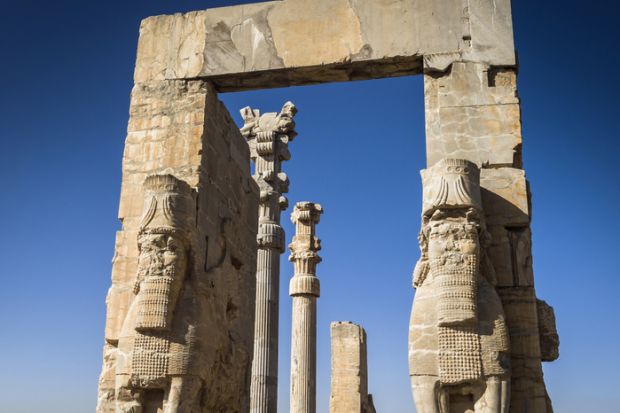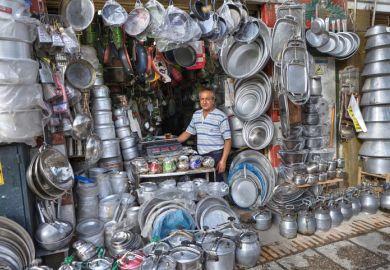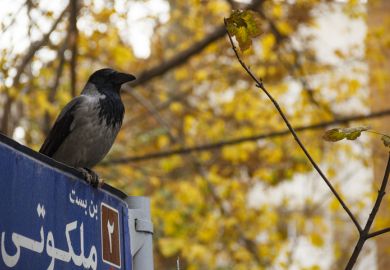It has now been several months since scholars of Tehran University were able to access international scientific databases. In a recent interview with the Mehr News Agency, a university official said the problem related to exchange-rate fluctuations. According to him, the university does not have money to pay off its outstanding debts to the databases, which, after a recent fall in the value of Iran’s currency, the rial, amounts to about $1,200,000 (£942,000). The university’s only hope is that the Ministry of Science will pay off the debt.
That is not a new problem in the country, and nor is it exclusive to the University of Tehran. Two years ago, students at Tarbiat Modares University complained about the same problem. It was also a common issue during my postgraduate studies at Shahid Beheshti University, another of Iran’s top-ranked universities. Students would constantly struggle to get the scientific resources we needed, and the problem was a recurring theme in our conversations.
Indeed, the Ministry of Science declared some years ago that 70 per cent of Iranian universities had no access to scientific databases, and I am not aware that the situation has improved much since then. As a result, Iranian students often have to figure out for themselves how to get the scientific resources they need.
A common way to get books and papers is to access file-sharing-based websites that provide free access to copyrighted works. But many resources are not accessible that way, so researchers have to resort to paying out of their own pockets to access resources from official sources.
There are even platforms that sell usernames and passwords of foreign universities to Iranian students so they can get the resources they need through others’ memberships. I remember that we also would look for people studying in universities abroad to ask them to get us the scholarly sources we needed. But more often than not, none of these methods were successful, so we had to do our work without the required resources.
Oddly enough, the problem is not all about money. It has a political dimension as well. It started about two decades ago, when the American sanctions against Iran escalated and international money transfer from Iran became impossible. The sanctions unfairly affected every aspect of Iranians’ lives, and academic research was no exception. Paying for international subscriptions became very difficult, and the repayment of many debts to scientific databases has consequently been postponed for years, resulting in revocation of access.
That said, budget deficits are a serious problem for academic research too (as well as for other aspects of Iranian academia). Universities complain that they are paid in Iranian rials, whereas they have to pay for international database access in US dollars, thus running into trouble with every rise in the exchange rate. Such problems keep bringing up the same old debates about Iran’s low expenditure on research and development.
In the absence of a potent private sector, the main burden of financing R&D falls on the government. That is why, every year, the share of the annual budget assigned to R&D gives rise to vociferous public debates. Despite many promises to the contrary, the current budget commits the same amount as last year: just 0.24 per cent of Iranian GDP, well below the global average.
By contrast, the country’s latest development plan calls for 1.5 per cent of GDP to be invested in R&D. And Iran’s 20-Year Vision Plan demands 4 per cent by 2025.
Such low spending and lack of access to international databases makes Iran’s high global rank in scientific output a very curious case. For 2022, for instance, Iran’s global rank is as high as 15, according to the SCImago Journal & Country Rank, based on the Scopus database.
Iranian governors like to take credit for such performance, but to the extent that it has been gained through authentic research, rather than citation manipulation, it must be attributed to the individual endeavour of Iran-based researchers than to the country’s scientific development. In fact, most of the work is done by postgraduate students, often with no proper funding: postgraduates in Iran have to publish scholarly papers before they can graduate. Professors often put their names on the papers despite having made no substantial contribution to them.
The least that the professors and politicians could do is ensure that those hard-working postgraduates have access to the papers and information they need to continue to prop up Iran’s research reputation. Even better would be to re-evaluate the true worth of citation rankings and to fund Iranian science at a level that would allow it to truly surpass global standards.
Roohola Ramezani has a PhD in philosophy from Shahid Beheshti University, Tehran. He was formerly a research fellow at the IFK International Research Centre for Cultural Studies in Vienna. Topics in social epistemology, science and education studies, and Iranian studies are among his interests.
Register to continue
Why register?
- Registration is free and only takes a moment
- Once registered, you can read 3 articles a month
- Sign up for our newsletter
Subscribe
Or subscribe for unlimited access to:
- Unlimited access to news, views, insights & reviews
- Digital editions
- Digital access to THE’s university and college rankings analysis
Already registered or a current subscriber?








